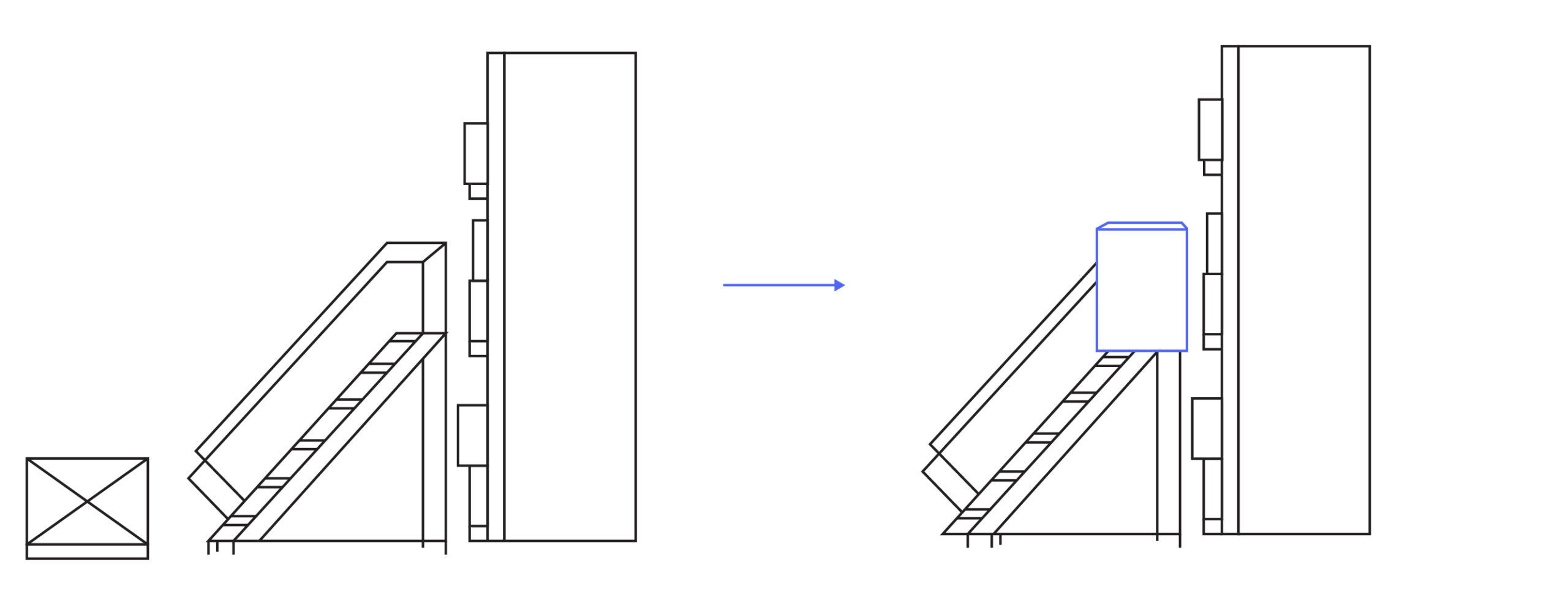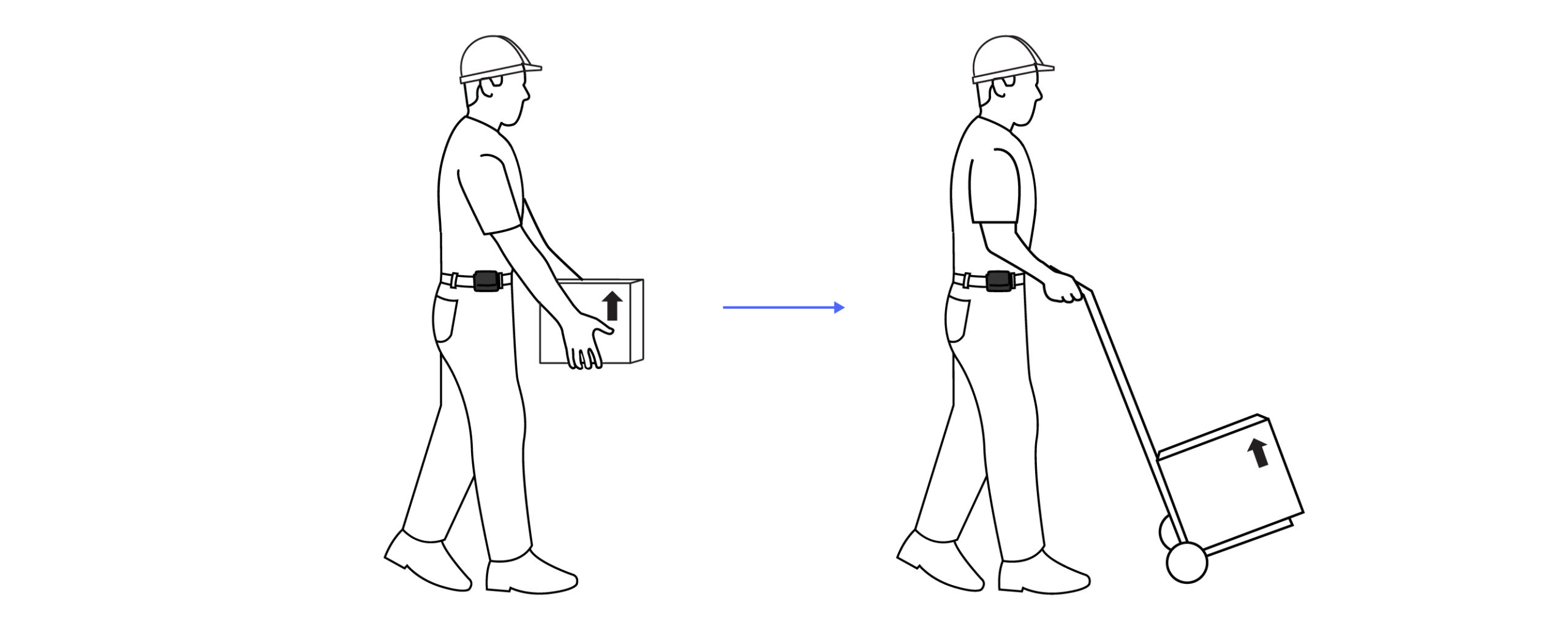Turning Data
Insights Into
Safety Improvements
September 3, 2020 |

New technologies, like wearable devices, are providing companies with more data than ever before. This rich information offers valuable insights into how workers are performing tasks and how management can improve workplace design and safety processes.
Facilities in all types of industries – from e-commerce to retail to manufacturing – are discovering ways to utilize data from connected technology to implement solutions that mitigate safety risks. Here are a few real-world examples of the practical, yet powerful, ways wearable tech is improving workplace safety:
Custom Shelves Elevate Safety

Adding shelves to a ladder reduced risky twisting postures.
Issue:
At the facility of a Big Four Tech company focused on e-commerce, data showed pickers were performing a very high number of high risk twisting postures. In turn, the safety team assessed their workstation to determine the source of the unsafe movements. It was discovered that the workers were moving products from a ladder to an awkwardly-located bin below and behind them. This placement, coupled with the challenge and danger of pivoting their feet while on a ladder, was forcing the pickers to twist excessively to meet productivity metrics.
Improvement:
The facility purchased a small number of specially designed shelves and attached them to the ladder. The shelves elevated the bin and allowed employees to place products into it without the need to bend and twist. After seeing a 53% reduction in high risk twisting postures due to the improved bin placement, the facility purchased a total of 159 shelves to accommodate their pickers.
Removed Rail Eliminates Reaching
Removed Rail Eliminates Reaching

Removing a sorting belt rail greatly reduced high risk postures.
Issue:
When a large U.S. home improvement retailer deployed wearable tech at their facility, excessive awkward reaching postures were revealed among sorters. Upon evaluation, it was clear that sorters were being forced to reach over a side rail in order to manually spread out and move boxes on a sorting belt. The 12-inch side rail ran the entire length of the operation area.
Improvement:
The company completely removed the problematic side rail and sorter operators’ postures improved dramatically. With this one simple improvement, sorters brought down their high risk postures from a consistent 300-400 per day to only 10-15.
New Insights on New Tools
New Insights on New Tools

Using a special hand truck improved driver biomechanics.
Issue:
Management at a leading American beverage manufacturer was examining the biomechanics of their delivery drivers, who are required to handle many smaller packages compared to the bulk drivers. The company purchased a new hand truck, designed to allow steady, stable raising and lowering of products without manual lifting, to evaluate the impact of the new tool on one of their employees.
Improvement:
Using wearable tech, the company was able to clearly identify the value of their purchase. Collected data showed that the employee using the new hand truck had the third lowest number of high risk postures in the group evaluated. Furthermore, the driver performed 57% less daily high risk postures than the per day average of the 12 drivers evaluated.
These three examples show how wearable devices are helping real companies identify improvements to be made in their workplace design and processes – and the substantial impact on worker safety these practical changes can make.
Haytham Elhawary
CEO & Cofounder, KINETIC
FEATURES
RESOURCES
2019 KINETIC © All rights reserved.